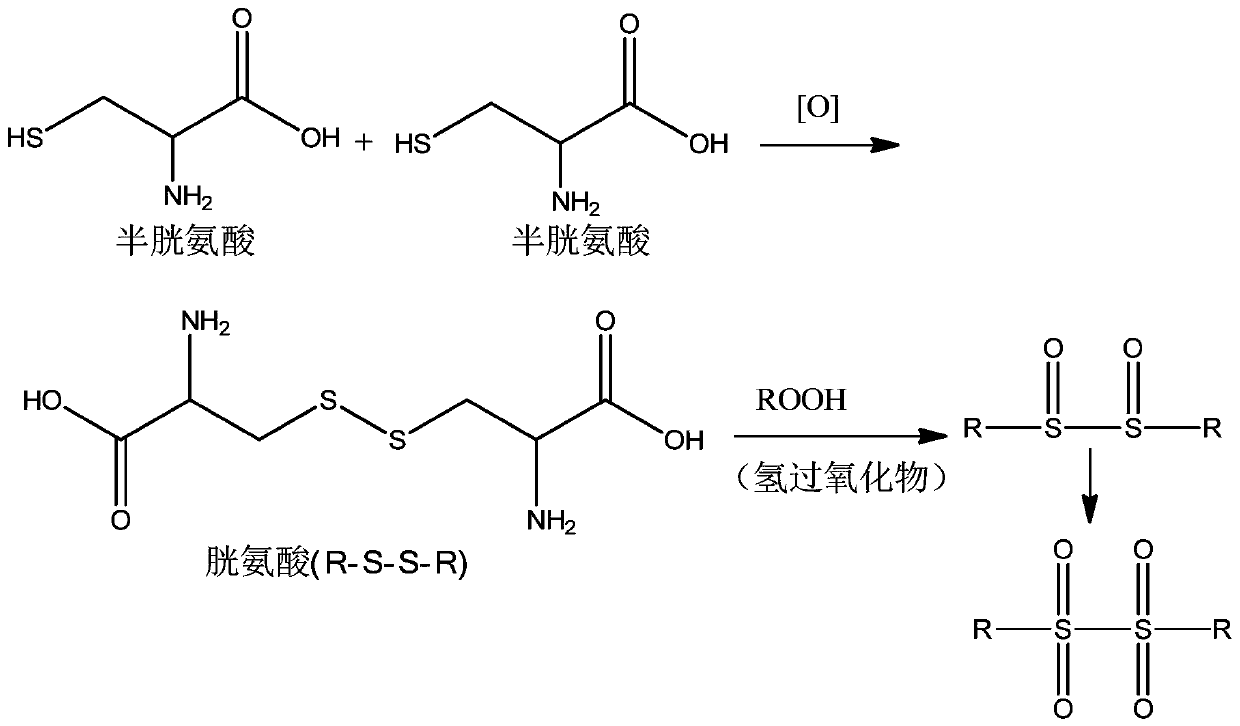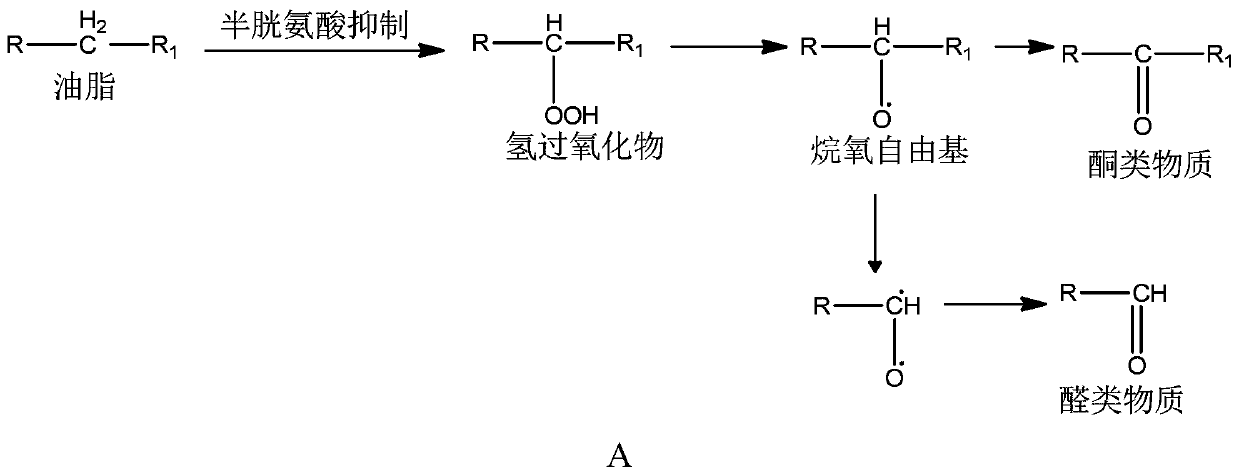Application of L-cysteine or L-cysteine hydrochloride in preparation of chemical agent for reducing hydroperoxide and carbonyl value
A technology of cystine hydrochloride and hydroperoxide, which is applied in the fields of fried and baked foods, can solve the problems of poor solubility of phenolic substances, affect food flavor, and are rare, so as to improve the nutritional value of food and improve Effects of Flavor and Textural Properties
- Summary
- Abstract
- Description
- Claims
- Application Information
AI Technical Summary
Problems solved by technology
Method used
Image
Examples
Embodiment 1
[0039] Wash commercially available fresh potatoes, dry them with gauze, peel them, slice them into potato chips with a thickness of 0.25 cm and a diameter of 3.5 cm, wash off the surface starch with water, and dry the surface with filter paper. Soak the potato chips in four concentrations of cysteine hydrochloride solutions (0%, 0.1%, 0.3%, 0.5%; w / v) for 15 min, and fry them in a 160°C oil pan for 2 min. The carbonyl value and peroxide value of each group of potato chips were measured by colorimetry and iodometric method, the results are shown in Figure 4 .
[0040] It can be seen from the results that, compared with the potato chips without L-cysteine hydrochloride added, with the increase of the concentration of cysteine hydrochloride in the soaking liquid, the fried potato chips after soaking treatment, the The carbonyl value and peroxide value both decreased continuously, with the maximum decrease of 18% and 73% respectively. It can be seen that soaking potato pr...
Embodiment 2
[0042] Biscuit formula: 400g biscuit flour, 100g shortening, 5g salt, 175g sucrose, NaHCO 3 4g, NH 4 HCO 3 2g, 78g of water. Add 0, 0.4, 0.8, 1.0, 2.0g / kg cysteine hydrochloride respectively according to the mass of the dough. ×5×0.3cm biscuits, put them in an oven at 190°C for 10 minutes, take them out and place them in a desiccator for 4 hours. Determination of the carbonyl value and peroxide value of each group of biscuits, the results are shown in Figure 5 .
[0043] It can be seen from the results that, compared with biscuits without adding L-cysteine hydrochloride, with the increase of cysteine hydrochloride addition, the carbonyl value and peroxide value of biscuits decreased continuously, and the largest decrease was 36% and 35% respectively. It can be seen that adding cysteine hydrochloride directly to the raw materials of noodle products is an effective method to reduce the hydroperoxide and carbonyl value in food.
PUM
 Login to View More
Login to View More Abstract
Description
Claims
Application Information
 Login to View More
Login to View More - R&D
- Intellectual Property
- Life Sciences
- Materials
- Tech Scout
- Unparalleled Data Quality
- Higher Quality Content
- 60% Fewer Hallucinations
Browse by: Latest US Patents, China's latest patents, Technical Efficacy Thesaurus, Application Domain, Technology Topic, Popular Technical Reports.
© 2025 PatSnap. All rights reserved.Legal|Privacy policy|Modern Slavery Act Transparency Statement|Sitemap|About US| Contact US: help@patsnap.com



